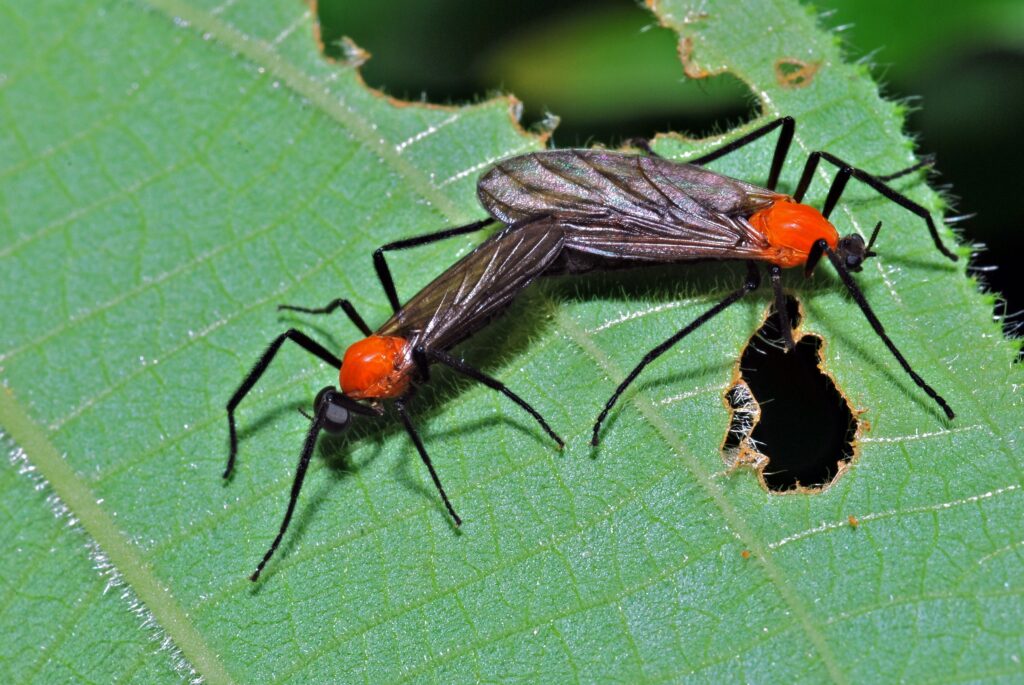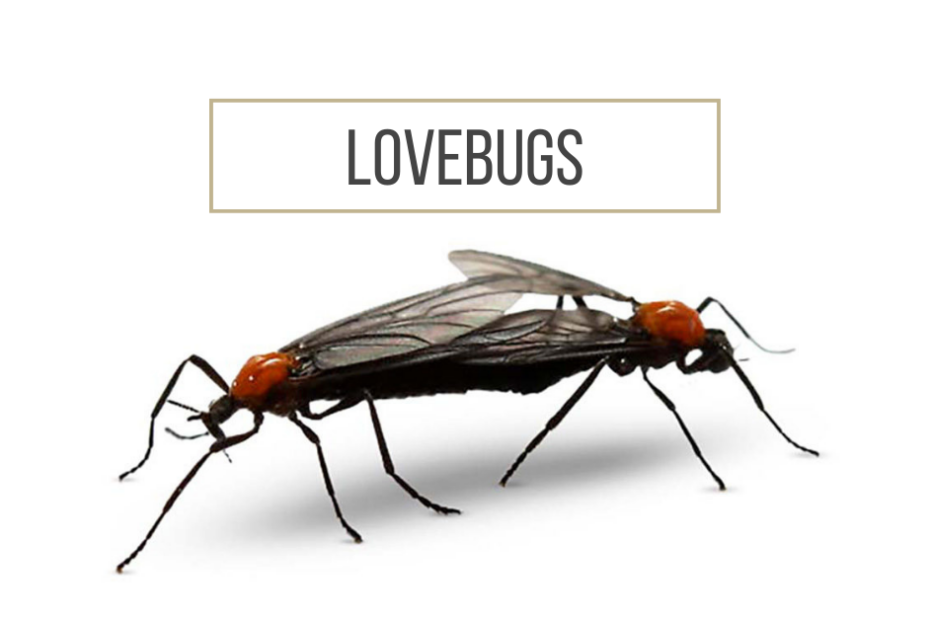What is a Lovebug?

Lovebugs. You’ve heard of them, and may even know that we have 2 lovebug seasons in Florida, but what are they and where did they come from?
Well, a common theory is that they are the result of a genetic experiment gone wrong at the University of Florida, and that they escaped. Right out of a Romero movie! Night of the living lovebug anyone? That theory is 100% wrong. You can read more about the debunking of that theory on Snopes.
The lovebug is actually a species of the May Fly and are native to Central America. It is believed that they arrived in the U.S. in the 1920’s, likely aboard a ship that arrived in either in Galveston or New Orleans. In the late 1940’s, they made their way to Florida.
Like many of us, they were attracted to the warm, humid climate of the Gulf Coast and decided to make this their primary residence. You may have noticed them swarming, flying around stuck together, or even splattered all over your car. If you happen to be in SW Florida in May or September, you will have likely seen these pesky little buggers.

Our first season for these critters starts late in April and lasts throughout May, about 4-5 weeks. The second season in August/September. And occasionally in South Florida, a 3rd mini season in December. They swarm during their mating period, and then stay in mated pairs, stuck together for up to several days. Their lifespan is not long with females living an average of 3-4 days, and males slightly longer. The adults feed off plant nectar, while the larva feeds off decaying vegetation, making them rather beneficial.
Lovebugs are not harmful to human or to pets, and they do not bite or sting, however, they are still considered a nuisance. Their swarms can impact visibility and make driving a bit messy. Their bodies are on the acidic side, so this can harm your paint job on your vehicle, so make sure to rinse (ok, maybe scrub) them off if you notice them stuck to your hood!
Want to join us in paradise, even with lovebugs? Contact me to start your home search!
